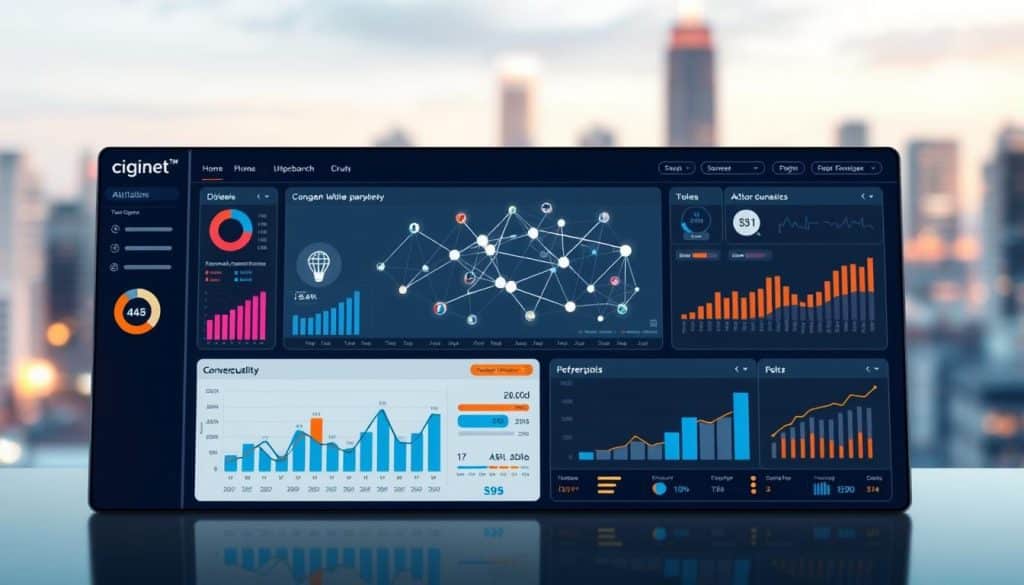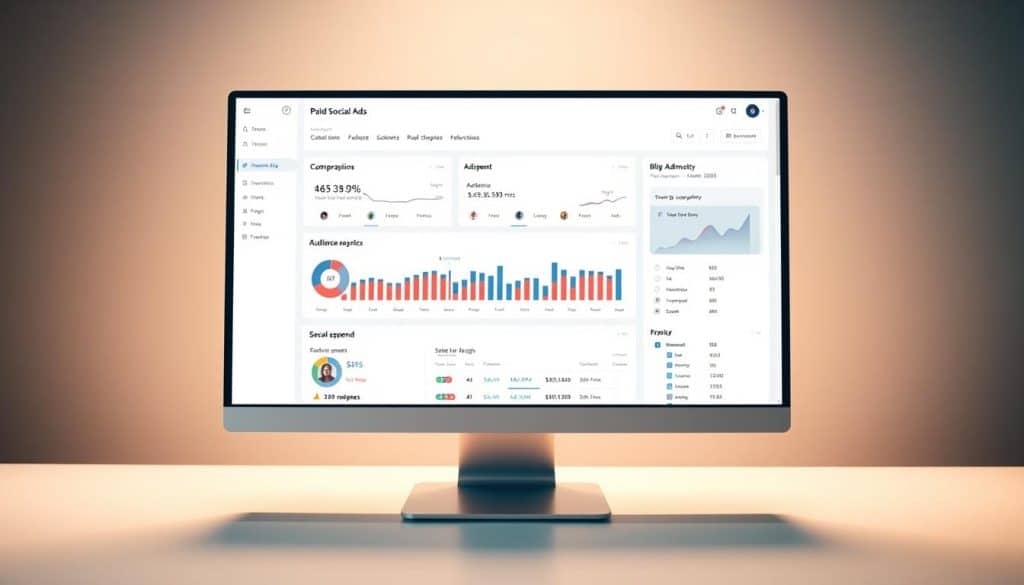What if you could achieve exponential business growth without burning through massive marketing budgets? This question drives countless entrepreneurs and business leaders to explore unconventional strategies that deliver remarkable results.
Growth hacking represents a data-driven methodology that combines creativity, analytics, and rapid experimentation. Unlike traditional marketing approaches, this strategy focuses on finding scalable, repeatable ways to grow your business efficiently.
The numbers speak volumes about its effectiveness. Companies using SEO-driven growth tactics achieve an impressive 14.6 percent conversion rate. Compare this to traditional outbound methods that barely reach 1.7 percent.
This approach proves especially valuable for startups and lean teams. You don’t need enormous budgets to compete with established players. Instead, you need smart shortcuts and creative marketing techniques that maximize every dollar spent.
Successful startup scaling depends on systematic experimentation and measurable results. It’s about finding what works, then doubling down on those winning strategies.
Key Takeaways
- Growth hacking combines data analysis with creative experimentation for rapid business expansion
- SEO-driven tactics deliver 14.6% conversion rates versus 1.7% from traditional outbound marketing
- This methodology works best for resource-constrained startups and lean business teams
- Success requires systematic testing and measurement of marketing strategies
- Smart shortcuts and unconventional approaches often outperform expensive traditional methods
- Scalable and repeatable processes form the foundation of effective growth strategies
SEO & Website Optimization
Rank Higher, Convert Faster!
Optimize your site for better search rankings and increased traffic. Let’s boost your visibility today!
Building Your Growth Hacking Foundation
Before diving into creative tactics, you need to establish the fundamental pillars that support sustainable growth. Growth hacking success depends on three core elements: comprehensive data infrastructure, validated market demand, and systematic testing frameworks. Without these foundations, even the most innovative strategies will fail to deliver consistent results.
The Data-Driven Approach to Digital Marketing Strategy
Your digital marketing strategy must be built on solid analytics from day one. Tools like Google Analytics, Hotjar, and Mixpanel provide essential insights into user behavior patterns and conversion funnels. These platforms help you track critical metrics including customer acquisition cost, lifetime value, and retention rates.
Data analysis reveals hidden opportunities that intuition alone cannot uncover. Monitor key performance indicators consistently to identify trends and optimize your growth efforts effectively.
Achieving Product-Market Fit Before Scaling
Scaling without product-market fit wastes resources and creates unsustainable growth. You must validate that your product solves a real problem for your target audience. Customer feedback, usage metrics, and retention data indicate whether you’ve achieved true market validation.
Focus on improving your core offering before expanding your reach. Product-market fit creates the foundation for all successful growth initiatives.
Setting Up Rapid Experimentation Frameworks
Rapid experimentation allows you to test growth hypotheses quickly and efficiently. Establish clear testing protocols that include hypothesis formation, success metrics, and timeline parameters. This systematic approach prevents random tactics and ensures measurable progress toward your growth objectives.
Creative Growth Hacking Tactics for Explosive User Acquisition
The fastest-growing companies don’t just acquire users—they create systems where users acquire other users automatically. These viral strategies transform your product into a self-replicating growth machine that scales without proportional increases in marketing spend.
Success comes from understanding how to build growth directly into your product experience. When users naturally share your product as part of using it, you create sustainable momentum that compounds over time.
Viral Strategies That Create Self-Sustaining Growth
True viral marketing happens when sharing becomes essential to the user experience. Hotmail pioneered this approach by adding “PS: I love you. Get your free e-mail at Hotmail” to every email sent through their platform.
This simple signature turned every email into a marketing message. Users couldn’t avoid promoting Hotmail because the signature was part of the service itself.
Product-Led Growth Techniques for Organic Expansion
Product-led growth makes your product the primary driver of customer acquisition. Dropbox mastered this by creating features that required collaboration and sharing.
Their shared folders feature naturally encouraged users to invite colleagues and friends. The product became more valuable when more people used it, creating organic expansion through utility rather than traditional marketing.
Leveraging Referral Programs and Social Proof
Strategic referral programs can accelerate user acquisition dramatically. PayPal’s legendary approach offered $10 to new users and another $10 for each friend they referred.
This strategy generated 7-10% daily growth rates by making referrals financially rewarding for both parties. The program turned customer acquisition costs into customer rewards.
Building Shareable Product Features
Design features that inherently encourage sharing. Dropbox’s referral program increased sign-ups by 60% by offering additional storage space for successful referrals.
The key is making sharing beneficial to the user’s core experience, not just an add-on feature.
Gamifying User Referrals
Add game-like elements to increase referral participation. Progress bars, achievement badges, and leaderboards make referring friends feel like an engaging challenge rather than a chore.
| Company | Viral Mechanism | Growth Result | Key Success Factor |
|---|---|---|---|
| Hotmail | Email signature | Rapid scaling | Unavoidable exposure |
| Dropbox | Storage rewards | 60% signup increase | Mutual benefit |
| PayPal | Cash incentives | 7-10% daily growth | Financial motivation |
Conversion Optimization and Customer Retention Mastery
Optimizing conversions and retaining customers forms the backbone of sustainable growth that compounds over time. Your success depends on systematically testing what works and automating processes that keep customers engaged long after their first purchase.
A/B Testing Your Way to Higher Conversions
A/B testing transforms guesswork into data-driven growth decisions. You can test everything from headlines and button colors to entire page layouts. Small changes often yield surprising results.
Start with high-impact elements like your main headline or call-to-action button. Test one variable at a time to isolate what drives improvement. Even a 2% increase in conversion rates can significantly boost your revenue over time.
“The best marketing decisions are made with data, not opinions.”

Automation Tools for Sustainable Growth
Automation platforms like AiArkitechs, Mailchimp, and more handle repetitive tasks while you focus on strategy. These tools nurture leads, onboard customers, and collect feedback without increasing your workload.
The AARRR framework helps you systematically analyze your customer lifecycle. Track Acquisition, Activation, Retention, Revenue, and Referral metrics to identify optimization opportunities.
Traction Channels That Scale with Your Business
Focus on channels that grow stronger as your business expands. Customer retention becomes more cost-effective than acquisition as you scale.
Email Marketing Automation
Automated email sequences guide prospects through your sales funnel. Welcome series, abandoned cart reminders, and re-engagement campaigns work around the clock to convert and retain customers.
Behavioral Triggers and Personalization
Use customer data to create personalized experiences. Trigger specific actions based on user behavior, purchase history, or engagement patterns. This approach increases lifetime value and strengthens customer retention rates significantly.
Transform Your Business with Strategic Growth Experiments
Your journey with growth hacking tactics starts with changing how you think about business expansion. This approach isn’t about cutting corners or using manipulative tricks. It’s about building a systematic framework for rapid experimentation that drives real results.
The most successful companies gain traction through unexpected experiments. Dropbox grew through simple referral rewards. Airbnb expanded by posting listings on Craigslist. These wins came from testing unconventional ideas with purpose and measuring everything.
You can achieve sustainable growth by maintaining ethical standards while experimenting boldly. Focus on creating genuine value for your customers. Build trust through transparent practices. Test small, learn fast, and scale what works.
Start implementing these strategies today. Set up your experimentation framework. Choose one growth hacking tactic from this guide. Run your first test within the next week. Remember that consistent testing and learning from both successes and failures will unlock your business’s true growth potential.
FAQ
What exactly is growth hacking and how does it differ from traditional marketing?
Growth hacking is a systematic methodology that combines creativity, data analysis, and rapid experimentation to achieve exponential growth with minimal resources. Unlike traditional marketing that focuses on broad awareness campaigns, growth hacking emphasizes speed, efficiency, and measurable results through data-driven growth strategies. It’s particularly effective for startups and resource-constrained companies because it prioritizes scalable tactics over expensive advertising campaigns.
What foundational elements do I need before implementing growth hacking tactics?
You need three critical prerequisites: a robust data infrastructure using tools like Google Analytics, Hotjar, and Mixpanel to track essential KPIs including customer acquisition cost (CAC) and lifetime value (LTV); achieving product-market fit before attempting to scale; and establishing rapid experimentation frameworks for quick testing and iteration. Without these foundations, growth hacking efforts often fail because they lack the systematic approach needed for sustainable results.
Can you provide examples of successful viral strategies that created explosive growth?
Hotmail’s email signature campaign added “Get your free email at Hotmail” to every outgoing message, creating a viral marketing loop that drove massive user acquisition. Airbnb integrated with Craigslist to automatically post listings, leveraging an existing platform’s traffic. PayPal’s referral bonus strategy achieved 7-10% daily growth rates by incentivizing user acquisition through existing customers. These examples show how viral mechanisms can be built directly into the user experience.
How important is A/B testing in growth hacking, and what should I test first?
A/B testing is fundamental to growth hacking success because even minor changes can yield significant improvements in conversion optimization. Start by testing high-impact elements like headlines, call-to-action buttons, and landing page layouts. The key is systematic experimentation – test one variable at a time to understand what drives results. Companies that consistently A/B test their growth hypotheses typically see 20-30% improvements in conversion rates over time.
What automation tools are essential for scaling growth hacking efforts?
Essential automation tools include HubSpot for lead nurturing and customer retention, Mailchimp for email marketing automation, and Zapier for connecting different platforms and streamlining workflows. These tools enable you to maintain personalization at scale while reducing operational overhead. The goal is to create automated systems that nurture leads, onboard new customers, and retain existing ones without proportionally increasing your workload.
How do I identify the right traction channels for my business?
Focus on traction channels that align with your target audience’s behavior and can scale with your business. Test multiple channels simultaneously but concentrate resources on the 2-3 that show the highest return on investment. Consider channels like content marketing, social media, partnerships, and product-led growth strategies. The key is to avoid spreading efforts too thin and instead double down on channels that demonstrate sustainable growth potential.
What role does product-led growth play in modern growth hacking?
Product-led growth turns your product into the primary driver of customer acquisition, retention, and expansion. Companies like Dropbox created features that naturally encourage sharing and collaboration, making the product itself a growth engine. This approach is particularly powerful because it creates organic expansion through user behavior rather than relying solely on marketing campaigns. The product experience becomes your most effective marketing tool.
How can I create effective referral programs that actually drive growth?
Successful referral programs combine meaningful incentives with seamless user experience. PayPal’s strategy worked because they offered substantial value () to both referrer and referee. Design your referral system to be easy to use, provide clear value to participants, and track performance meticulously. Consider gamifying the referral process with progress bars, leaderboards, or tiered rewards to increase participation and engagement rates.
What are the most common mistakes businesses make when implementing growth hacking?
The biggest mistake is attempting to scale before achieving product-market fit, which leads to wasted resources and failed initiatives. Other common errors include focusing on vanity metrics instead of meaningful KPIs, implementing tactics without proper measurement systems, and expecting immediate results from startup scaling efforts. Successful growth hacking requires patience, systematic testing, and a commitment to data-driven decision making rather than pursuing random tactics.
How do I measure the success of my growth hacking efforts?
Track key metrics including customer acquisition cost (CAC), lifetime value (LTV), conversion rates, viral coefficient, and retention rates. The LTV to CAC ratio should be at least 3:1 for sustainable growth. Monitor cohort analysis to understand how different user groups behave over time, and use attribution modeling to identify which creative marketing tactics drive the highest quality customers. Focus on metrics that directly correlate with business growth rather than vanity metrics like page views or social media followers.






